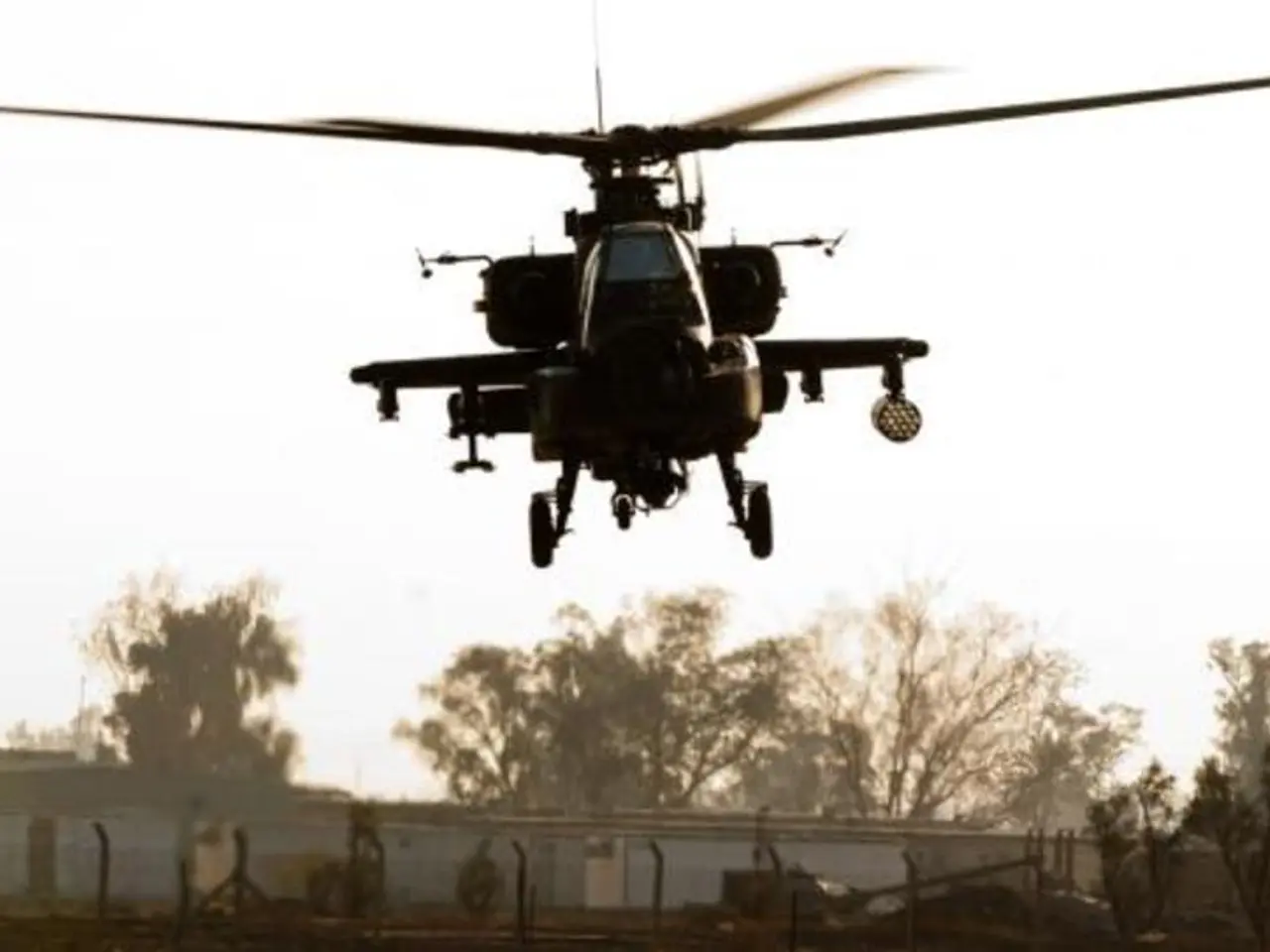Unveiled is the number of drones hovering close to the frontiers of Belarus
In the skies above Belarus, a robust air defense system is in place, designed to safeguard the country's airspace from potential aerial threats. This system, comprising a combination of advanced radar stations, missile regiments, and specialized units, is continually evolving to meet the challenges of the modern era.
At the heart of this system is the Medium and high-altitude radar station "Protivnik-GM", capable of detecting stealth aerial vehicles with a range exceeding 350 km. This powerful radar is not alone; the Digital radar "Vostok-D" and the Automated radar station 19Ж6М also boast detection ranges of over 340 km and 300 km, respectively.
The tracking radar complex "Sopka-2" is another crucial component, capable of detecting small-sized aircraft at an altitude of 3 km, within a range of up to 160 km. These radar stations, along with the low-altitude radar complex Rosha-RB-M, which can detect targets at an altitude of up to 100 m at a distance of up to 50 km, ensure early detection of potential threats.
The Air Force and Air Defense Forces of Belarus can detect aerial vehicles, including stealth ones, up to 400 km away. This capability is bolstered by the integration of a new air defense missile regiment, the 147th Anti-Aircraft Missile Regiment, into the Special Operations Forces (SOF) in May–June 2025, based in Babruisk.
The SOF is also expanding its capabilities, forming additional units such as a rocket artillery regiment and specialized brigades including an air assault brigade in the southern region and a command support brigade with electronic warfare and signals intelligence assets. These units increase operational flexibility and enhance electronic warfare capabilities relevant to countering UAVs.
Recent activities have seen active interception of UAVs using electronic warfare countermeasures. For instance, an unidentified UAV was successfully detected and electronically jammed, leading to its crash over Minsk on 29 July 2025, demonstrating operational readiness to neutralize incursions.
Belarusian forces are also conducting targeted trainings and drills involving Radio-Technical Troops focused on countering UAVs and network-centric command and control. These exercises are scheduled for August-September 2025, preparing for joint operational-tactical drills with Air Force and Air Defense Forces to sharpen integrated airspace defense.
The increased use of electronic warfare, signals intelligence, and rapid deployment of air defense units suggests a layered defense system focusing on early detection, interception, and neutralization of aerial threats like drones near Belarusian borders.
These measures seem linked to regional tensions, as Belarus strengthens air defenses amid drone-related incidents impacting neighbouring countries such as Lithuania, which has reported drone violations traced back to Belarusian territory.
However, it is important to note that according to Alexander Volfovich, the State Secretary of the Security Council of the republic, no blame can be placed on Belarus for aggressive actions on the border. Furthermore, he reported that Belarus is not pursuing an aggressively policy on the border.
In summary, Belarus's airspace protection against UAVs near its borders currently relies on a mix of enhanced missile regiments, electronic warfare for UAV interception, specialized SOF units, and focused counter-drone training exercises. These measures are designed to safeguard Belarus's skies and maintain peace in the region.
- The digital radar "Vostok-D" and the Automated radar station 19Ж6M, with their detection ranges of over 340 km and 300 km respectively, are integral gadgets in the advanced air defense system protecting Belarus's airspace.
- As Belarus continues to fortify its air defense against potential aerial threats, the increased use of technology, such as electronic warfare and signals intelligence, also positions them to counter against modern gadgets like unmanned aerial vehicles (UAVs).




